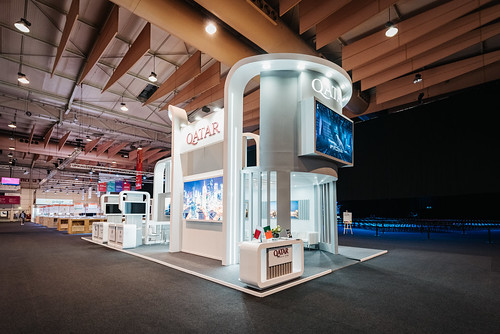Booming beyond oil: Qatar’s private sector trends fuel hopes for diverse economic future
Qatar #Qatar

August PMI data shows the non-energy sector in robust health, underpinned by a stable outlook and promising government initiatives for long-term growth.
Qatar’s non-energy private sector continued its upward trajectory in August, registering a Purchasing Managers’ Index (PMI) of 53.9, according to the latest data from the Qatar Financial Centre (QFC).
This marginal drop from July’s 54 indicates a consistently improving business environment and outperforms the long-term average since 2017.
The sector observed a growth in new business during August, although the expansion rate moderated from its peak in May. Meanwhile, key industries like manufacturing and financial services saw an influx of new orders.
Notably, output has been on a growth streak for over three consecutive years, with a minor dip in January after the conclusion of the FIFA World Cup Qatar 2022. Purchases also marked their sixth consecutive monthly increase, benefiting from more efficient supply chains.
Although cost pressures remained stable last month, employee costs surged to their highest level since February. In contrast, output prices experienced a modest decline for the fourth consecutive month.
The employment landscape was also favourable, especially in the services sector, as job creation extended its positive run for the sixth month.
Qatar’s non-oil revenue for Q2 2023 stood at $7.7 billion, a 2.2% increase year-on-year. This figure contributed to a budget surplus of $2.75 billion for the quarter, despite a 20.2% drop in total revenue and a 12.1% rise in expenditures.
Credit rating agencies have also given Qatar a favourable nod.
In March, Fitch maintained Qatar’s ‘AA-‘ rating but shifted the outlook from stable to positive. Moody’s followed suit last year, keeping its ‘Aa3’ rating but also revising the outlook to positive.
Looking ahead, the 12-month outlook for the non-energy private sector remains optimistic. Manufacturers are particularly bullish, followed by wholesalers and retailers.
This upbeat sentiment aligns with the International Monetary Fund’s (IMF) positive remarks on Qatar’s ambitious reforms and successful hosting of the 2022 FIFA World Cup.
The IMF also highlighted Qatar’s deft management of the Covid-19 pandemic, providing a safe backdrop for one of the first major global sporting events since the outbreak.
Moreover, the country has shown resilience against global economic volatility, including the impact of the Russia-Ukraine conflict on energy prices.
Qatar is expected to experience real GDP growth between 2–2.5% in 2023–24, aided by domestic demand and LNG expansion, with inflation predicted to moderate around 3%.
While risks remain, notably from the global economic climate and geopolitical tensions, the IMF suggests that accelerated reforms and sustained high hydrocarbon prices could further strengthen Qatar’s economic outlook.
Fiscal discipline was maintained last year, resulting in a fiscal surplus that rose to around 10% of GDP in 2022, a sharp increase from close to zero in 2021.
Consequently, Qatar’s debt decreased by 16% to about 42% of GDP.
These trends and upcoming government strategies, particularly the 3rd National Development Strategy to be unveiled next summer, bode well for Qatar’s ambition to transform into a more diversified, resilient economy.